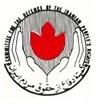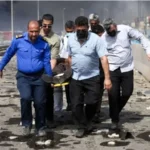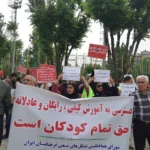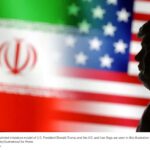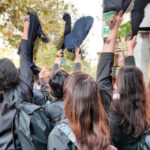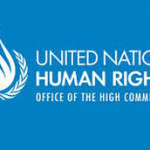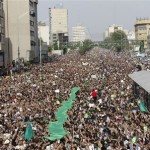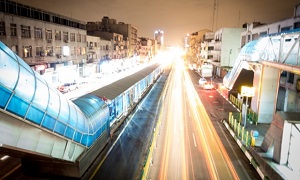
Ordinary Iranians feeling the pinch of sanctions lash out at occupants of luxury cars that have come to symbolise the opulence of Tehran’s ‘rich kids’
theguardian
The death of a glamorous 20-year-old woman in a high-speed car accident in a canary yellow Porsche in Tehran has stirred up anger about the growing wealth gap in Iran.
An immediate media buzz led curious social media users to an Instagram page set up by friends of Parivash Akbarzadeh, and this soon became a clearing house for all manner of sentiments regarding Akbarzadeh’s death.
Followers of her personal Instagram page increased from 20,000 to 40,000 in just a few days, while users shared 18,000 comments. Stunning photos decorating the page contrasted with many comments expressing hatred and disgust.
“You should have known this day would come after you walked around outdoors looking like that,” wrote a user named Sara. “You got what was coming to you.”
Akbarzadeh had her supporters. Many regarded her as a celebrity. They mourned her and honoured her life through comments and poems, and attacked those who spoke ill of her. “You savages are the lowest of the low, circling her grave like a bunch of drooling hyenas,” wrote Nasser. “Get bent, you aren’t worth a fraction of what she was.”
The passenger in the Porsche, Mohammad Hossein Rabbani-Shirazi, died a few hours after the accident. He had purchased the car just a few days earlier and had allowed Akbarzadeh to take him for a spin.
But his identity added further drama because he was the grandson of Ayatollah Rabbani-Shirazi, once an aid to Ayatollah Ruhollah Khomeini, leader of the 1979 Revolution.
Ayatollah Abdolrahim Rabbani-Shirazi took part in the revolution and then acted as the representative of Khomeini in three of Iran’s provinces and sat on the body tasked with writing a new constitution. He was also a member of the Guardian Council, the Islamic constitutional watchdog, until his death – ironically in a car crash – in 1982.
This regime connection to the fatal accident in a Porsche, the symbol par excellence of Tehran’s rich kids, further inflamed many social media users and may have prompted an intervention by Ayatollah Ali Khamenei, Khomeini’s successor as Iran’s supreme leader. On 26 April, Khamenei strongly criticised young Tehranis flaunting luxury cars as a sign of “emotional insecurity” and accused them of being “intoxicated by pride in wealth”. He called on the police to produce “a plan for confronting all of the different aspects of insecurity facing society”.
Nor was Khamenei the first to speak in such terms. Whether he knew it or not, he was echoing the words of someone he has kept under house arrest for four years for supporting street protests after the disputed 2009 presidential election.
“We’re opposed to this kind of unabashed affluence,” Mir Hossein Mousavi told voters in the poor southern Tehran neighbourhood of Naazy Abad in March 2009, in the first speech of his presidential campaign. “When the wealthy parade their luxury cars in front of the less fortunate, it constitutes an oppression of the working classes.”
The increasing sight of luxury vehicles has brought the issue of inequality onto Iran’s streets. Just past the prominent overpass on grand Mir Damad Avenue, I run into Yaqoub. He’s 40-ish and dressed in a tattered shirt that seems tailor made for his face. Yaqoub’s appearance illustrates the Tehrani colloquialism of “carton-sleeper” because with the most basic lodgings in the capital beyond his means, he has to sleep in a cardboard box.
“I swear to the eighth Imam [an 8th-century Shia leader whose shrine is in Mashhad, Iran], I haven’t eaten for a whole day. I have no work and no money. When I panhandle, no one gives me anything. I’m not old enough for them to feel pity for me yet. People slap me around and tell me to go get a job.”
If an empty belly weren’t enough, Yaqoub has nicotine craving to nurse. He fishes a packet of cheap Farvardeen cigarettes out of a pocket, strikes a match, and takes a drag.
“I swear to God, it’s debilitating,” he says. “Well, I was only a kid then, but I well recall that during the revolution they spoke of the oppressed, ‘the revolution of the barefooted’. Look at me, and there are thousands like me in this town, a million even. How is it that we don’t have something to eat or a place to lay down our heads?
“And then when you look up, all you see are magnificent towers along this street. May they live happy lives. I don’t begrudge them their wealth, but maybe a bit should flow down to us. I am illiterate, have no money, and no family. Where am I to turn? Wasn’t the revolution supposed to help us, the destitute?”
Contrasting Yaqoub’s life with the well-to-do today raises a question: How did the 1979 revolution affect the economic inequality that existed during rule of Mohammad Reza Shah Pahlavi?
The fatal Porsche crash in north Tehran triggered heated debate on social media, but not for the first time. Just last year, the unabashed display of wealth on an Instagram page called #richkidsoftehran rankled a lot of Iranians. Photos showed young people lounging around in opulent Tehran penthouses, or in deluxe villas in the wealthy neighbourhood of Lavassan or on the shores of the Caspian Sea. Other pictures showed them in the latest model Porches and Maseratis. Throughout they are dressed in well-known western brands, their eyes exuding carelessness and pleasure – everything the 1979 revolution was supposed to banish.
The pages met a vociferous reaction not just from young, left-leaning social activists, but from a vast swath of the online community who found the pictures abhorrent. Soheila, 23, is a graphic design student living in the affluent neighbourhood of Shahrak-e Gharb, in western Tehran. She has what look like authentic Gucci sunglasses poised on her highlighted hair as she sips coffee at a gently lit, fashionable cafe.
“There is nothing wrong with being wealthy, but these nouveau riche kids show off in a despicable way,” she says. “Well, I’m doing okay myself, if not as well as these bastards. But still, when I attend a party, I don’t rush to post pictures from it on Facebook or Instagram. I’m a student and all of my friends are on my friend lists. Most of them have ordinary lives.
“Showing off your wealth is in really bad taste because we don’t live in a wealthy country. It’s not like this is Kuwait or Switzerland, or, I don’t know, Monaco. How many poor people do we have? The walls of our city are plastered with ads of people selling kidneys, and these sons of bitches are posting photos of themselves in their father’s swimming pool?”
According to the latest statistics published by the chair of the Majles’s Social Commission, the index of economic disparity between the lowest and the highest earners has reached 15. In a speech on “the effects of social forces”, Taqi Azad-Barmaki, sociology professor at Tehran University, claimed: “Nowhere in the world does income inequality exist as it does here… In fact, Iran is about the most stratified society in the world.”
In its latest UN Millennium Development Goals report, Iran ranked 68 out of 136 nations in terms of income inequality in 2013. But a member of the editorial board at Ebrar-e Eghtesadi (Daily Economic News) told Tehran Bureau: “Don’t forget that the 2014 UN Human Development report’s index was for 2012 and 2013, before the escalation of economic sanctions and soon after the dismantling of the social economic subsidies [the programme to phase out subsidies of everyday items including bread and energy]. The socioeconomic divergence of the last three years due to these two powerful events has been traumatic. We will see that only in subsequent UN reports.”
A review of Iran’s central bank statistics finds that the divergence of annual income between the bottom and top 10% has surpassed 810m rials (£18,466, $28,493). Wealthy families have 14 times more income than poor ones, while in larger cities the subsistence line has reached 12m rials (£273.50, $422).
Professor Hossein Raqfar, economics professor at Tehran’s Al-Zahra university, recently said that the real subsistence line in large cities is 25m rials (£570, $879) per month.
High inflation has been cited as one of the main causes. According to Iran’s Khabar Online news agency, commodity inflation is 40%, unemployment 25%, housing inflation 125%, and the devaluation of the national currency 113%. Furthermore, it suggests that the 370% increase in residential rents over the past eight years is the main reason for the rise in Iran’s poverty index.
Saeed, a cab driver who has a black shirt and an untrimmed white beard in the manner depicting a regime devotee, says: “I fought in the (Iran-Iraq) war for seven years, and was left with a piece of shrapnel in my shoulder, gastrointestinal ills from chemical weapons, and a heart attack as a result.”
He pauses while reaching under his steering wheel to pull out a wrapped wad of pills.
“I have to take these pills all day, under my tongue. A miserable being like me has to work from dawn to midnight and then they just pass all the wealth to a bunch of thieving capitalists. No one has ever asked me, ‘How is your life with so much illness and pain?’ This is my life and that of so many more. They duped us. The filthy bastards agitated for us to go and fight for Islam, for Iran. So, we offered our youth, our lives, for this?”
Saeed drops a passenger off on Vozara Street and continues toward Vali Asr Square. “Forgive my foul mouth. I guess I have a full belly after all. I get passengers who go to Farmanieh, Zafaranieh, Upper Jordan, and Fereshteh [better-off areas in north Tehran] and man, you feel like you’re going into another world.
“It’s as if those places are totally apart from the rest of our town. I can’t believe we are a mere 10km away, only ten minutes in light traffic. That’s heart wrenching. One is my world, a world of constant pressures, hot and frigid, with quarrelsome passengers, all for 500,000 rials a day (£11, $17.50); and then there is their world.
“I have been sentenced to witness all of this, every day. I have been sentenced with the memory of rising up in revolution, the memory of fighting in the war. By God, this is a grave injustice.”

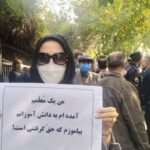
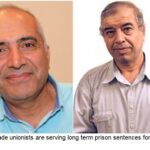
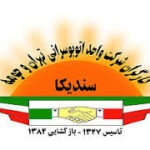

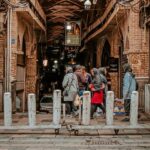
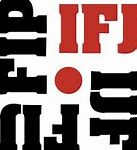



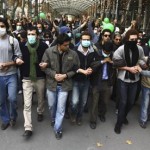
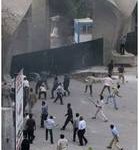
 Posted in
Posted in 